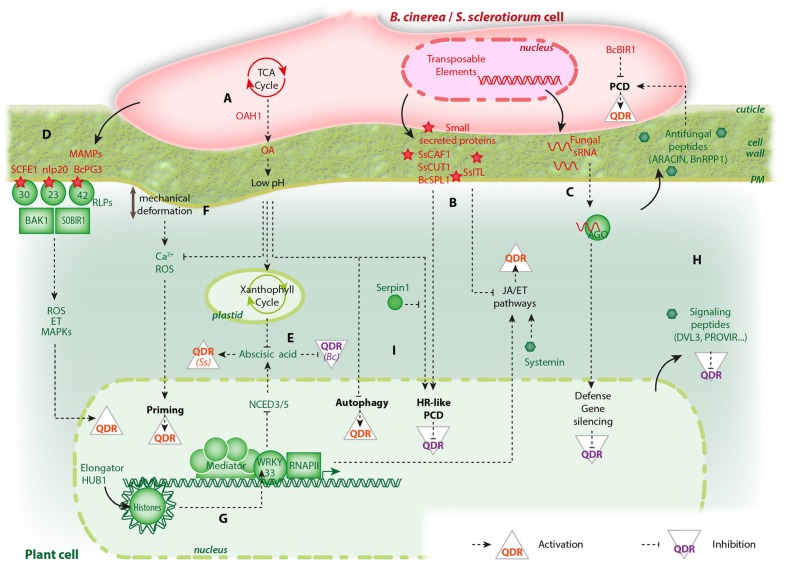FIGURE 1.
An overview of the molecular players involved in Botrytis cinerea/Sclerotinia sclerotiorum interactions with plants and their effect on quantitative disease resistance (QDR). Only pathways discussed in this review are shown, some elements were omitted for clarity. Fungal molecules are shown in red, plant molecules in green. (A) Effects of oxalic acid (OA) biosynthesis and secretion by fungi. (B) Small proteins secreted by fungi can activate hypersensitive response (HR)-like programmed cell death (PCD) or suppress jasmonic acid (JA) and ethylene (ET) signaling pathways to suppress QDR. (C) Fungal small RNAs hijack plant argonaute (AGO) proteins to suppress QDR. (D) Perception of microbe associated molecular patterns (MAMPs) such as SCFE1, nlp20, and BcPG3 by receptor-like proteins (RLPs) activate QDR. (E) The plant hormone abscisic acid can either activate QDR against S. sclerotiorum (Ss) or suppress QDR against B. cinerea (Bc). (F) Mechanical deformation caused by appressorium formation and fungal colonization of plant tissues prime plant cells for QDR through calcium and reactive oxygen species (ROS). (G) The plant general transcription machinery involves multiprotein complexes such as Elongator and Mediator that recruit the RNA polymerase II (RNAPII) to modulate gene expression upon fungal challenge. Some histone post-translational modifications are epigenetic marks altered after inoculation that regulate the activity of plant general transcription factors and control QDR. (H) Plant small bioactive peptides (green hexagons) have contrasted effects on QDR. (I) PCD in plant cells can either have a positive or negative effect on QDR depending on the type of cell death program activated.

